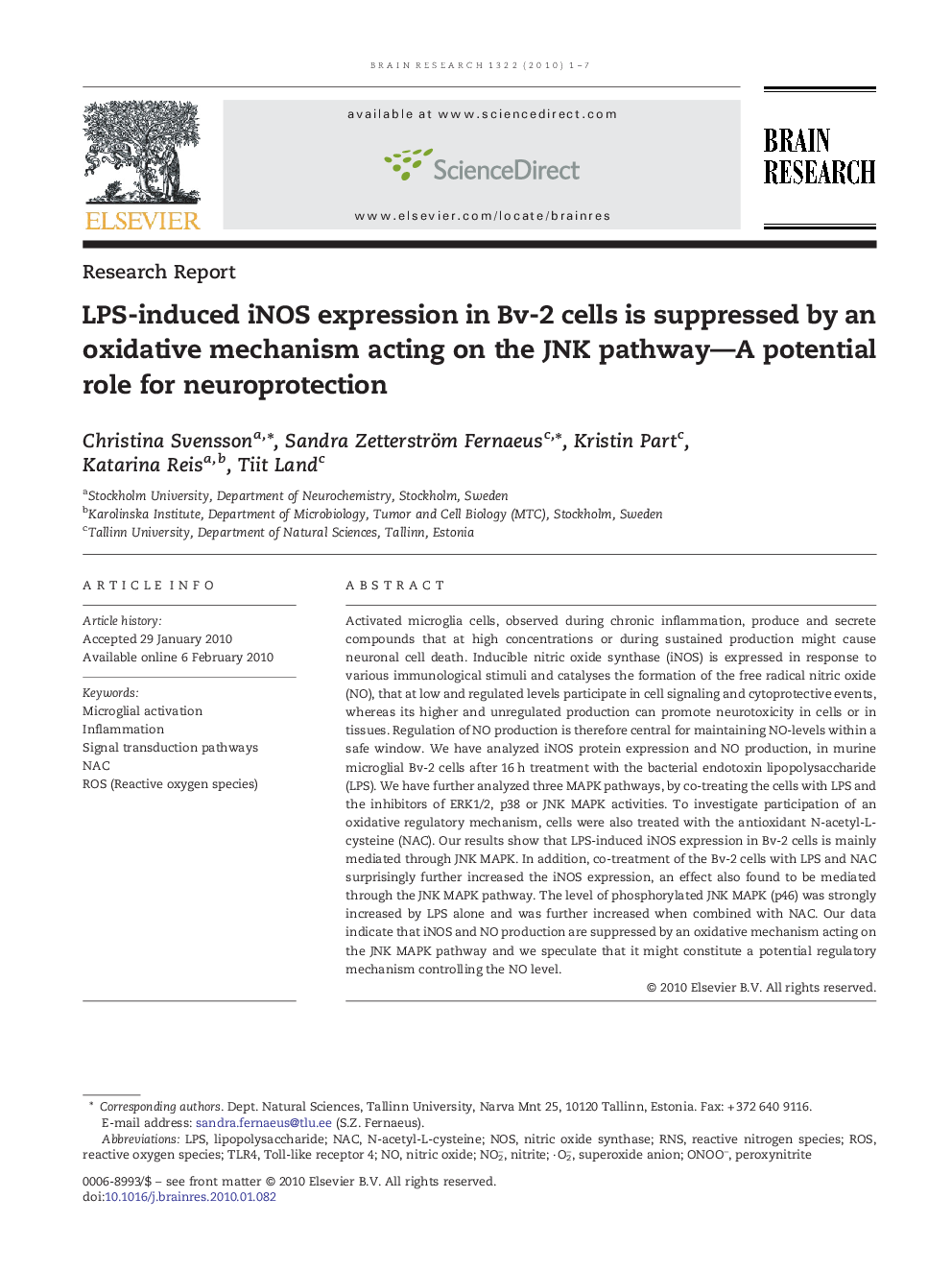| Article ID | Journal | Published Year | Pages | File Type |
|---|---|---|---|---|
| 4327248 | Brain Research | 2010 | 7 Pages |
Activated microglia cells, observed during chronic inflammation, produce and secrete compounds that at high concentrations or during sustained production might cause neuronal cell death. Inducible nitric oxide synthase (iNOS) is expressed in response to various immunological stimuli and catalyses the formation of the free radical nitric oxide (NO), that at low and regulated levels participate in cell signaling and cytoprotective events, whereas its higher and unregulated production can promote neurotoxicity in cells or in tissues. Regulation of NO production is therefore central for maintaining NO-levels within a safe window. We have analyzed iNOS protein expression and NO production, in murine microglial Bv-2 cells after 16 h treatment with the bacterial endotoxin lipopolysaccharide (LPS). We have further analyzed three MAPK pathways, by co-treating the cells with LPS and the inhibitors of ERK1/2, p38 or JNK MAPK activities. To investigate participation of an oxidative regulatory mechanism, cells were also treated with the antioxidant N-acetyl-L-cysteine (NAC). Our results show that LPS-induced iNOS expression in Bv-2 cells is mainly mediated through JNK MAPK. In addition, co-treatment of the Bv-2 cells with LPS and NAC surprisingly further increased the iNOS expression, an effect also found to be mediated through the JNK MAPK pathway. The level of phosphorylated JNK MAPK (p46) was strongly increased by LPS alone and was further increased when combined with NAC. Our data indicate that iNOS and NO production are suppressed by an oxidative mechanism acting on the JNK MAPK pathway and we speculate that it might constitute a potential regulatory mechanism controlling the NO level.
